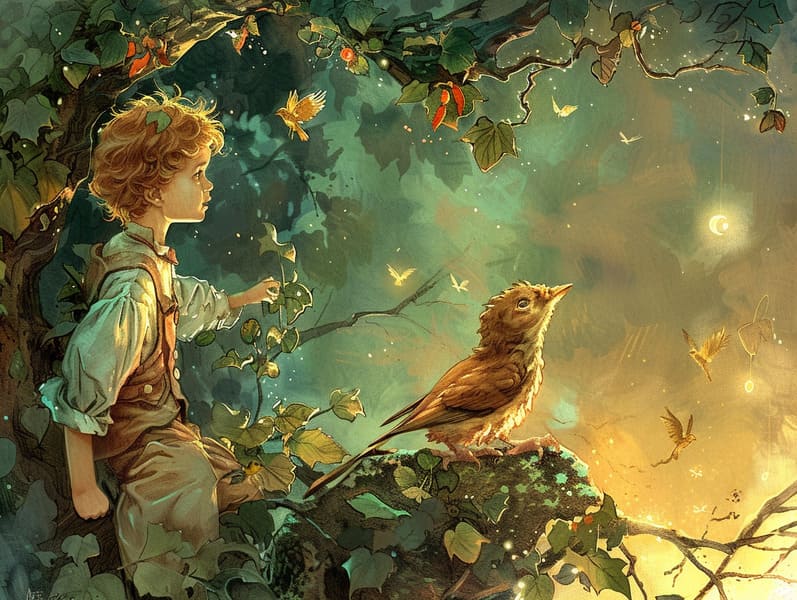The Emergence of Traditional Fairy Tales with Its Unending Enchantment.
The Emergence of Traditional Fairy Tales with Its Unending Enchantment.
Blog Article

Short fairy tales have deep roots. These stories have been passed down from one generation to the next centuries before they were ever written down. They emerged from a variety of traditions, including Indigenous traditions. They were initially narrated among adults, often carrying themes and messages aligned with the societal norms and beliefs of the time.
The Grimm brothers, Jacob and Wilhelm (the Grimm brothers), were among the first to compile and release many of these beloved stories. Their published works, "Grimm's Fairy Tales," included stories like "The Story of Cinderella," "The Story of Hansel and Gretel," and "The True Story of Snow White," which have since become mainstays in the world of famous fairy tales. Similarly, the Danish author's fantastical fairy tales, such as "The Story of the Little Mermaid," and "The Duckling that Could," have won hearts worldwide, ensuring their place in the pantheon of famous fairy tales.
Though they are centuries old, fairy tales remain as important as ever, especially as bedtime stories for kids. These whimsical stories are now available in diverse formats, including colorful picture books, charming animations, and internet fairy tales.
Their lasting appeal can be linked to several enchanting factors:
Important Morals: Old fairy tales often illustrate important moral lessons. Tales like "The Story of the Boy Who Cried Wolf" teach the virtue of truthfulness, while "The Race of the Tortoise and the Hare" exemplify the traits of determination and humility. These tales offer little ones clear distinctions between right and wrong, forming their moral compass in a mild yet impactful way.
Empathy and Understanding: Old fairy tales frequently include figures facing trials and tribulations, inciting kids to identify with their struggles and applaud their triumphs. For instance, "Beauty and the Beast" reveals the benefit of looking past the exterior to realize the true nature of a individual, strengthening kindness and knowledge.
Cultural Recognition: Many traditional fairy tales are rich in the cultural contexts from which they came. Engaging with these tales can provide delightful insights into different cultures, building a sense of cultural insight and discernment.
Fantasy and Imagination: The mythical elements in old fairy tales—mythical entities—inspire children’s inventiveness. These tales carry readers to supernatural realms, activating inventive dreams and a sense of delight that endures a lifetime.
Timeless fairy tales are not only bewitching but also enlightening. They serve as magical tools in promoting various thinking and feeling skills in the young. When old fairy tales are recited, they foster verbal development by teaching new word meanings and elaborate sentence structures. This practice also develops hearing abilities and mental focus, as children remain attentive, excited to see what happens next.
Furthermore, reflecting on the themes and characters of ancient fairy tales can develop cognitive skills and intellectual skills. Young ones are taught to spot patterns, foresee events, and know cause and effect. These examinations also contribute to the young say their thoughts and feelings, strengthening their emotional intelligence.
In today’s digital age, the abundance of free fairy tales online has made these narratives more acquirable than ever. Digital sites and digital apps give vast collections of popular fairy tales that can be enjoyed or played anytime, anywhere. Fairy tales spoken are particularly well-liked, offering an fun way for the young to be a part of these delightful tales. Audiobooks and read-to-me videos take characters and settings to life, often supported by charming background sounds and tunes that enhance the narrative adventure.
The timeless appeal of timeless fairy tales lies in their ability to modify to today's society while preserving their central values. Contemporary retellings of these narratives often present more inclusive figures and modern settings, making them understandable to today’s audience. However, the main ideas of spirit, warmth, and righteousness remain unchanged, continuing to strike a chord with children of all ages.
Ancient fairy tales also offer a sense of security and knownness. They extend a well-ordered narrative with a clear beginning, middle, and end, often concluding with the solving of conflicts and the triumph of right over wrong. This uniformity can be calming for children, providing a sense of solidity in an unstable world.
Classic fairy tales continue to mesmerize and train new generations, maintaining their attraction and significance in modern society. As bedtime stories for kids, they deliver a perfect blend of delight and instruction, facilitating moral values, empathy, and creativity. The availability of internet fairy tales and the in demand status of fairy tales read aloud confirm that these old fairy tales remain attainable to new generations.
By safeguarding and spreading these narratives, we continue to acknowledge the rich tapestry of myths and cultural heritage. Whether you are enjoying a colorful picture book, discovering a here digital collection, or listening via an audio story, the charm of famous fairy tales is always within reach. These fairy tales remind us of the enduring impact of stories and its ability to bond us across time and space.
Be it you are discovering a vividly illustrated book, exploring a digital library, or listening to an audio story, the elegance of timeless fairy tales is always within reach.
These tales reveal of the unfading spell of fairy tales and its ability to bind us across eras and regions, weaving a spell that enchants and educates alike.